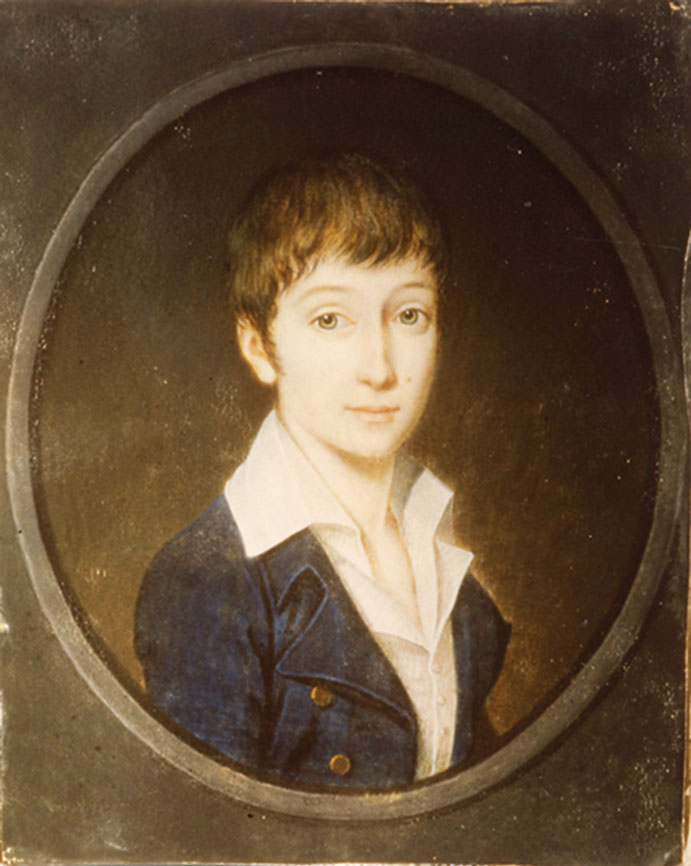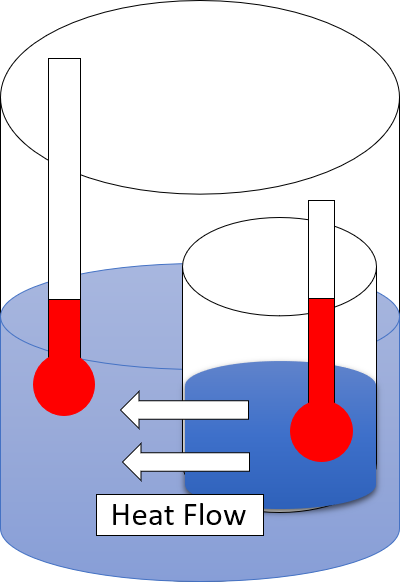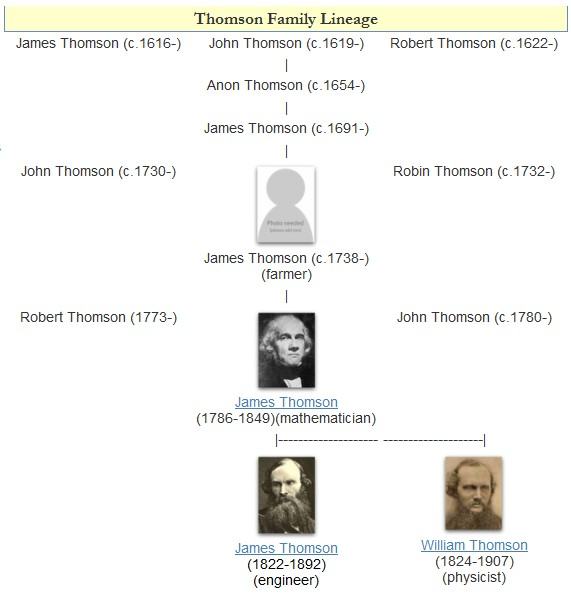|
Nicolas Léonard Sadi Carnot
Nicolas Léonard Sadi Carnot (; 1 June 1796 – 24 August 1832) was a French people, French military engineering, military engineer and physicist. A graduate of the École polytechnique, Carnot served as an officer in the Engineering Arm (''le génie'') of the French Army. He also pursued scientific studies and in June 1824 published an essay titled ''Reflections on the Motive Power of Fire''. In that book, which would be his only publication, Carnot developed the first successful theory of the Thermal efficiency, maximum efficiency of heat engines. Carnot's scientific work attracted little attention during his lifetime, but in 1834 it became the object of a detailed commentary and explanation by another French engineer, Émile Clapeyron. Clapeyron's commentary in turn attracted the attention of William Thomson, 1st Baron Kelvin, William Thomson (later Lord Kelvin) and Rudolf Clausius. Thomson used Carnot's analysis to develop an absolute thermodynamic temperature scale, whi ... [...More Info...] [...Related Items...] OR: [Wikipedia] [Google] [Baidu] |
École Polytechnique
(, ; also known as Polytechnique or l'X ) is a ''grande école'' located in Palaiseau, France. It specializes in science and engineering and is a founding member of the Polytechnic Institute of Paris. The school was founded in 1794 by mathematician Gaspard Monge during the French Revolution and was militarized under Napoleon I in 1804. It is still supervised by the Ministry of Armed Forces (France), French Ministry of Armed Forces. Originally located in the Latin Quarter, Paris, Latin Quarter in central Paris, the institution moved to Palaiseau in 1976, in the Paris-Saclay, Paris-Saclay technology cluster. French engineering students undergo initial military training and have the status of paid Aspirant, officer cadets. The school has also been awarding doctorates since 1985, masters since 2005 and bachelors since 2017. Most Polytechnique engineering graduates go on to become top executives in companies, senior civil servants, military officers, or researchers. List of É ... [...More Info...] [...Related Items...] OR: [Wikipedia] [Google] [Baidu] |
Second Law Of Thermodynamics
The second law of thermodynamics is a physical law based on Universal (metaphysics), universal empirical observation concerning heat and Energy transformation, energy interconversions. A simple statement of the law is that heat always flows spontaneously from hotter to colder regions of matter (or 'downhill' in terms of the temperature gradient). Another statement is: "Not all heat can be converted into Work (thermodynamics), work in a cyclic process."Young, H. D; Freedman, R. A. (2004). ''University Physics'', 11th edition. Pearson. p. 764. The second law of thermodynamics establishes the concept of entropy as a physical property of a thermodynamic system. It predicts whether processes are forbidden despite obeying the requirement of conservation of energy as expressed in the first law of thermodynamics and provides necessary criteria for spontaneous processes. For example, the first law allows the process of a cup falling off a table and breaking on the floor, as well as allowi ... [...More Info...] [...Related Items...] OR: [Wikipedia] [Google] [Baidu] |
Entropy
Entropy is a scientific concept, most commonly associated with states of disorder, randomness, or uncertainty. The term and the concept are used in diverse fields, from classical thermodynamics, where it was first recognized, to the microscopic description of nature in statistical physics, and to the principles of information theory. It has found far-ranging applications in chemistry and physics, in biological systems and their relation to life, in cosmology, economics, sociology, weather science, climate change and information systems including the transmission of information in telecommunication. Entropy is central to the second law of thermodynamics, which states that the entropy of an isolated system left to spontaneous evolution cannot decrease with time. As a result, isolated systems evolve toward thermodynamic equilibrium, where the entropy is highest. A consequence of the second law of thermodynamics is that certain processes are irreversible. The thermodynami ... [...More Info...] [...Related Items...] OR: [Wikipedia] [Google] [Baidu] |
Thermodynamic Temperature
Thermodynamic temperature, also known as absolute temperature, is a physical quantity which measures temperature starting from absolute zero, the point at which particles have minimal thermal motion. Thermodynamic temperature is typically expressed using the Kelvin scale, where the unit of measurement is the ''kelvin'' (unit symbol: K). The Kelvin scale uses the same degree interval as the Celsius scale but is offset so that 0 K corresponds to absolute zero. For comparison, a temperature of 295 K corresponds to 21.85 °C and 71.33 °F. Another absolute scale of temperature is the Rankine scale, which is based on the Fahrenheit degree interval. Historically, thermodynamic temperature was defined by Lord Kelvin in terms of a macroscopic relation between Work (thermodynamics), thermodynamic work and Heat, heat transfer as defined in thermodynamics, but the kelvin was redefined by international agreement in 2019 in terms of phenomena that are now understood as man ... [...More Info...] [...Related Items...] OR: [Wikipedia] [Google] [Baidu] |
Rudolf Clausius
Rudolf Julius Emanuel Clausius (; 2 January 1822 – 24 August 1888) was a German physicist and mathematician and is considered one of the central founding fathers of the science of thermodynamics. By his restatement of Sadi Carnot's principle known as the Carnot cycle, he gave the theory of heat a truer and sounder basis. His most important paper, "On the Moving Force of Heat", published in 1850, first stated the basic ideas of the second law of thermodynamics. In 1865 he introduced the concept of entropy. In 1870 he introduced the virial theorem, which applied to heat. Life Clausius was born in Köslin (now Koszalin, Poland) in the Province of Pomerania in Prussia. His father was a Protestant pastor and school inspector, and Rudolf studied in the school of his father. In 1838, he went to the Gymnasium in Stettin. Clausius graduated from the University of Berlin in 1844 where he had studied mathematics and physics since 1840 with, among others, Gustav Magnus, Peter Gusta ... [...More Info...] [...Related Items...] OR: [Wikipedia] [Google] [Baidu] |
William Thomson, 1st Baron Kelvin
William Thomson, 1st Baron Kelvin (26 June 182417 December 1907), was a British mathematician, Mathematical physics, mathematical physicist and engineer. Born in Belfast, he was the Professor of Natural Philosophy (Glasgow), professor of Natural Philosophy at the University of Glasgow for 53 years, where he undertook significant research on the mathematical analysis of electricity, was instrumental in the formulation of the first and second laws of thermodynamics, and contributed significantly to unifying physics, which was then in its infancy of development as an emerging academic discipline. He received the Royal Society's Copley Medal in 1883 and served as its President of the Royal Society, president from 1890 to 1895. In 1892, he became the first scientist to be elevated to the House of Lords. Absolute temperatures are stated in units of kelvin in Lord Kelvin's honour. While the existence of a coldest possible temperature, absolute zero, was known before his work, Kelvin d ... [...More Info...] [...Related Items...] OR: [Wikipedia] [Google] [Baidu] |
Émile Clapeyron
Benoît Paul Émile Clapeyron (; 26 January 1799 – 28 January 1864) was a French engineer and physicist, one of the founders of thermodynamics. Life Born in Paris, Clapeyron studied at the École polytechnique, graduating in 1818. He also studied at École des mines. In 1820 he and Gabriel Lamé went to Saint Petersburg to teach and work at the school of public works there. He returned to Paris only after the Revolution of July 1830, supervising the construction of the first railway lines connecting Paris to Versailles and Paris to Saint-Germain. The half brothers Stéphane Mony and Eugène Flachat collaborated in this project, which was financed by Adolphe d'Eichthal( fr), Rothschild, Auguste Thurneyssen, Sanson Davillier and the Péreire brothers. Clapeyron took his steam engine designs to England in 1836 to find a manufacturer and engaged Sharp, Roberts and Co. From 1844 to 1859 Clapeyron was a professor at École des Ponts et Chaussées. Clapeyron married Mélanie B ... [...More Info...] [...Related Items...] OR: [Wikipedia] [Google] [Baidu] |
Heat Engine
A heat engine is a system that transfers thermal energy to do mechanical or electrical work. While originally conceived in the context of mechanical energy, the concept of the heat engine has been applied to various other kinds of energy, particularly electrical, since at least the late 19th century. The heat engine does this by bringing a working substance from a higher state temperature to a lower state temperature. A heat source generates thermal energy that brings the working substance to the higher temperature state. The working substance generates work in the working body of the engine while transferring heat to the colder sink until it reaches a lower temperature state. During this process some of the thermal energy is converted into work by exploiting the properties of the working substance. The working substance can be any system with a non-zero heat capacity, but it usually is a gas or liquid. During this process, some heat is normally lost to the surroundings ... [...More Info...] [...Related Items...] OR: [Wikipedia] [Google] [Baidu] |
Reflections On The Motive Power Of Fire
''Reflections on the Motive Power of Fire and on Machines Fitted to Develop that Power'' () is a scientific treatise written by the French military engineer Sadi Carnot.full text of 1897 ed. ( Full text of 1897 edition on Wikisource ) Published in 1824 in French, the short book (118 pages in the original) sought to advance a rational theory of heat engines. At the time, heat engines had acquired great technological and economic importance, but very little was understood about them from the point of view of physics. Carnot's ''Reflections'' is now widely regarded as a key document in the development of modern thermodynamics, and Carnot himself (who published nothing else during his lifetime) has often been identified as the "father of thermodynamics". The book introduced such concepts as thermodynamic efficiency, reversible processes, the thermodynamic cycle, and Carnot's theorem. Overview The book is considered the founding work of thermodynamics. It contains the preli ... [...More Info...] [...Related Items...] OR: [Wikipedia] [Google] [Baidu] |
Engineering Arm
{{unreferenced, date=September 2016 The Engineering Arm, or ''l'arme du génie'', is the Military engineering arm of the French Army. The Engineering Arm's soldiers are known as sappers (''sapeurs''). Its soldiers in the Paris Fire Brigade are more specifically ''sapeurs-pompiers'', and those of the Civil Security Instruction and Intervention Units are more specifically ''sapeurs-sauveteurs''. The Arm's colours are red and black, and its patron saint is Saint Barbara. The Arm's motto is ''"Parfois détruire, souvent construire, toujours servir!"'', meaning "Sometimes to destroy, often to build, always to serve!" The Engineering Arm is divided into three main services: *The Land Component of the Defence Infrastructure Service, ''Composante Terre du Service d'infrastructure de la Défense'' (also known by its former title of the Engineering Service, ''le Service du Génie'') fulfils conventional engineering roles for the French military and ministry of Defence. This includes t ... [...More Info...] [...Related Items...] OR: [Wikipedia] [Google] [Baidu] |
Physicist
A physicist is a scientist who specializes in the field of physics, which encompasses the interactions of matter and energy at all length and time scales in the physical universe. Physicists generally are interested in the root or ultimate causes of Phenomenon, phenomena, and usually frame their understanding in mathematical terms. They work across a wide range of Physics#Research fields, research fields, spanning all length scales: from atom, sub-atomic and particle physics, through biological physics, to physical cosmology, cosmological length scales encompassing the universe as a whole. The field generally includes two types of physicists: Experimental physics, experimental physicists who specialize in the observation of natural phenomena and the development and analysis of experiments, and Theoretical physics, theoretical physicists who specialize in mathematical modeling of physical systems to rationalize, explain and predict natural phenomena. Physicists can apply their k ... [...More Info...] [...Related Items...] OR: [Wikipedia] [Google] [Baidu] |







